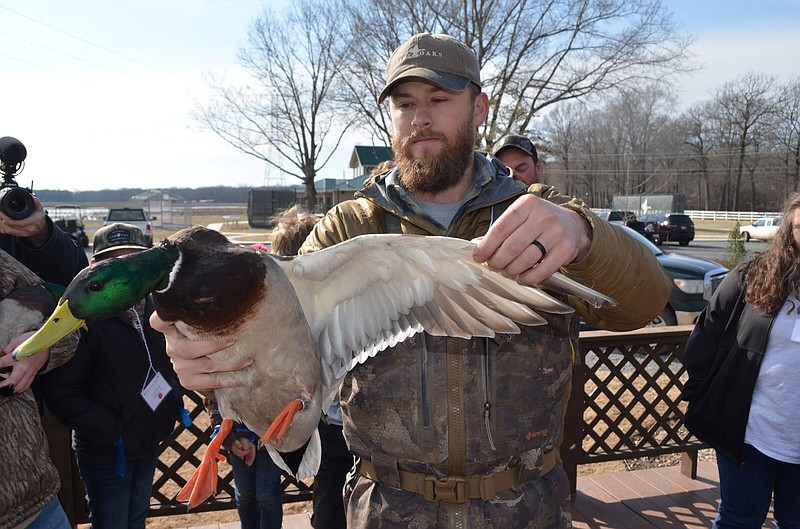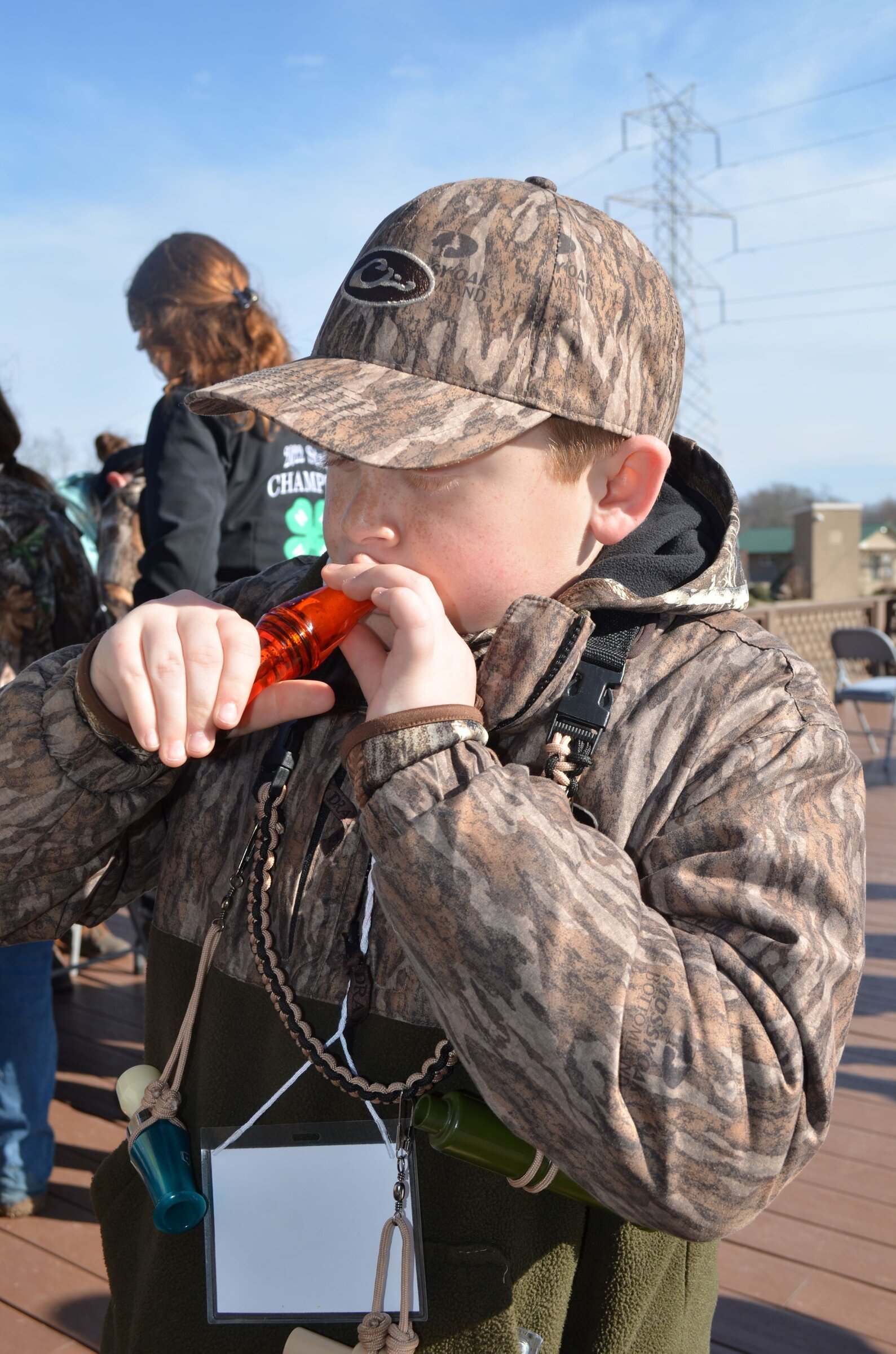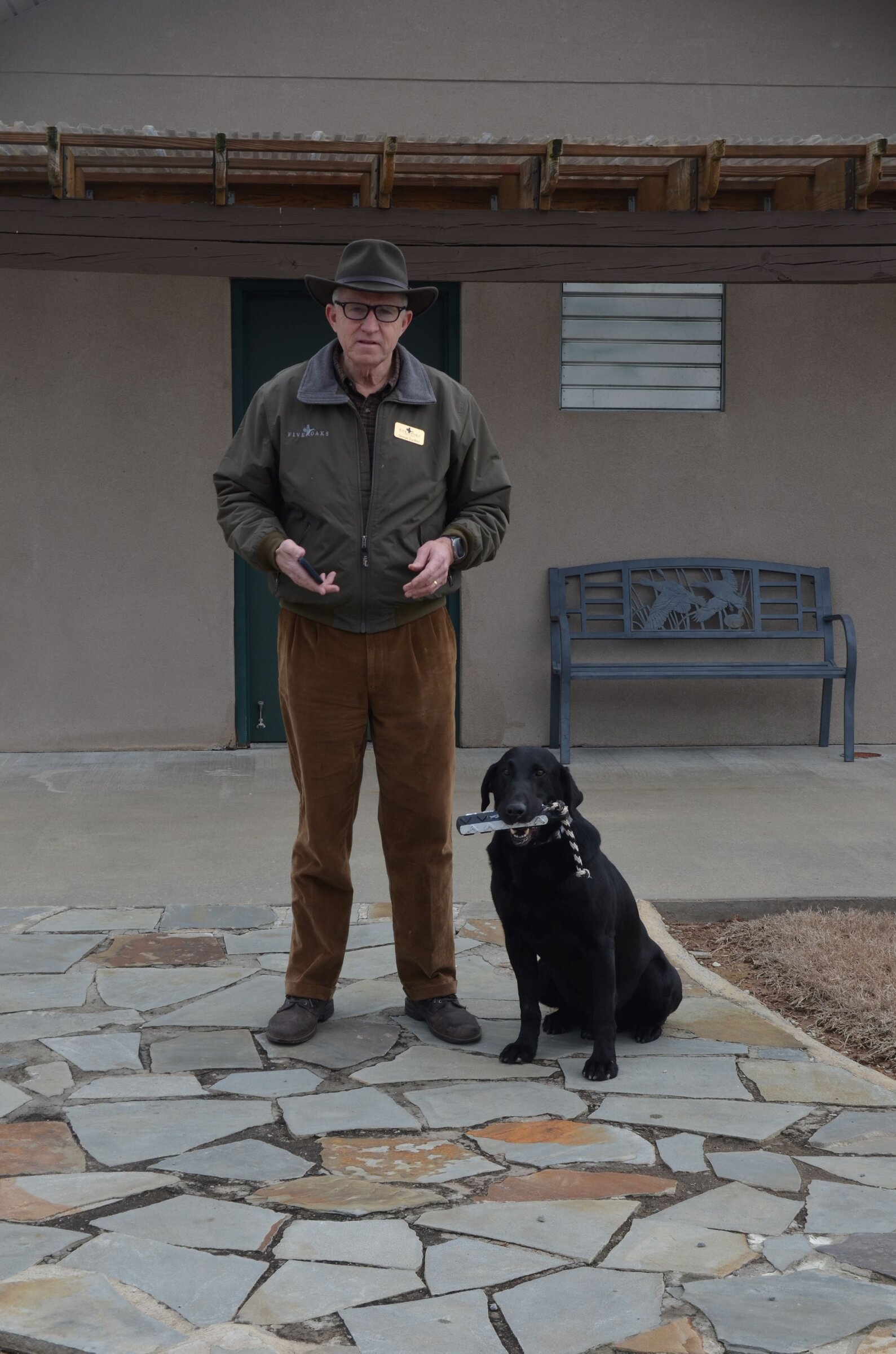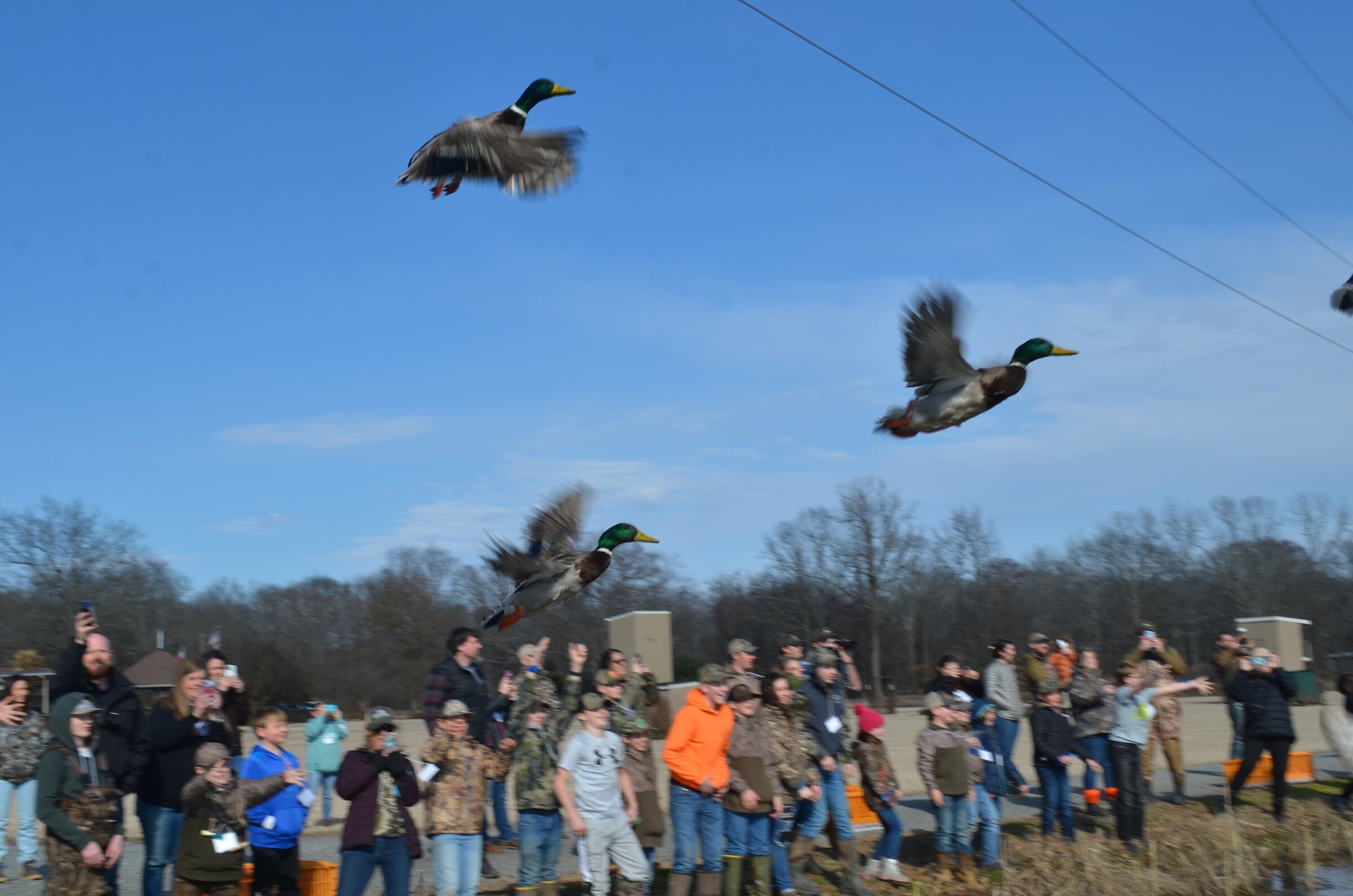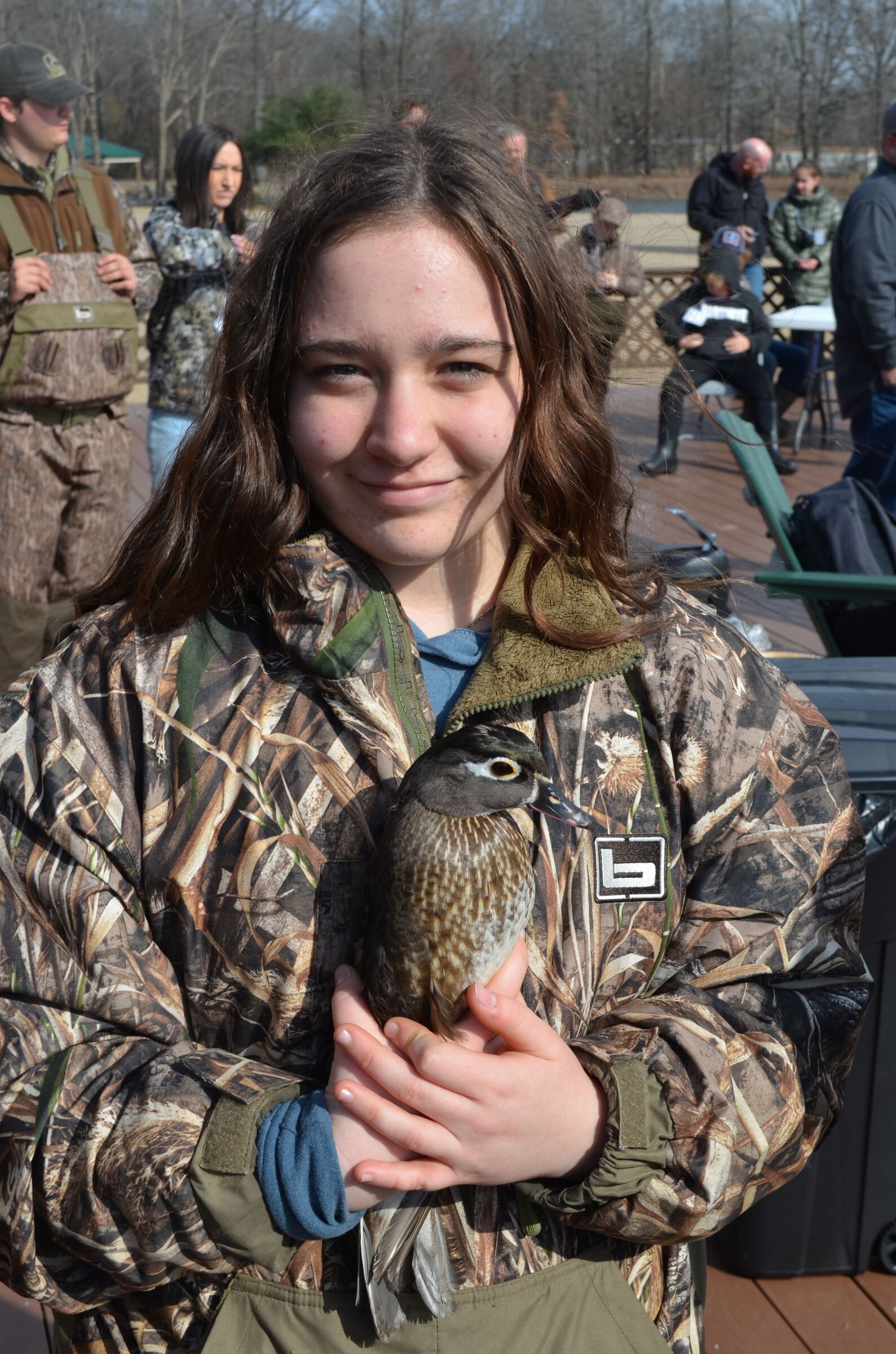Beginning at 9 a.m. Feb. 11, Five Oaks Duck Lodge near George Dunklin/Bayou Meto Wildlife Management Area welcomed 42 young people for a day of waterfowl education. The program is in its second year, hosted by Arkansas 4-H in conjunction with the University of Arkansas at Monticello and Five Oaks Agriculture, Research and Education Center.
UAM Wildlife Instructor Tiffany Osborne was coordinator for the day of learning and seeing wild ducks in their natural habitat. She shared the activity's intent.
"The Wonders of Waterfowl workshop is connecting students ages 9 to 19 to waterfowl and understanding how they interact with their habitat. There are young people from 13 different county 4-H clubs here today," she said. The limited number of openings for participants was provided at a $20 fee per head. She explained how the educational process was conducted through five different stations set up in the lodge and around the property with students divided into four smaller rotating groups.
"The first station is a lot of hands-on learning about species identification of ducks and geese, especially those found along the Mississippi flyway," Osborne said. Students had waterfowl specimens of various wings and feet along with photography to demonstrate the characteristics of different types of ducks passing through Arkansas on their annual migratory route.
"At station two," she said, "they suit up in waders and go into a moist soil unit (flooded rice field) to collect food samples that they then observe under a microscope." This stop teaches children about duck habitat and food resources found in pressed plants, seeds, grains and invertebrates.
While 4-Hers gathered specimens, UAM grad certificate student Lije Wojohn explained how different species of ducks have evolved unique feeding methods. "Ducks are able to exploit different dietary resources due to morphological differences in their bill/lamellae or tooth-like structures. Dabbling ducks eat native seeds, invertebrates and grain," Wojohn said.
Some species such as spoonbills have large bills and lamellae evolved to filter feed on zooplankton as well as grains and invertebrates. Station three was presented by Ryan Askren who serves as Director of Five Oaks Agriculture, Research and Education Center as well as adjunct professor at UAM. He explained migration routes and modern tracking of wild fowl through use of geo-spatial technology information systems (satellite transmitter attached to ducks). These devices allow biologists to track and map a mallard or teal along their migration route in real-time. The fourth stop on the morning's schedule was an outdoor obstacle course designed to demonstrate the hazards, both natural and man-made, affecting migratory bird populations on their yearly transit from the Canadian nesting grounds to the Mexican wintering grounds.
In the mid-afternoon, station five brought freshly captured mallards and wood ducks from a Five Oaks flooded timber unit to be banded and re-released into the wild. Bands help unravel some of the mystery of waterfowl behavior. When a banded bird is harvested and the information on the band is reported to U.S Fish and Wildlife Service, the data goes into the overall tracking system that develops a picture of bird habits formed from such information.
It also taught participants how biologists take morphological measurements such as weight, wing length and girth to determine age and health of captured birds. Associate Professor of Wildlife Douglas C. Osborne, Ph.D, who founded Osborne Lab based at UAM, conducted this portion of the program. He is in his ninth year conducting southeast Arkansas duck banding immediately following close of duck season.
"I came here in July 2012 and began our study in February 2014. My intention when we began was to build a waterfowl program recognized across the country," Douglas Osborne said. He explained how not just anyone can legally capture and band waterfowl. It requires a Master Banding Permit.
"I had multiple biology degrees and eight-years' experience working with other banders. I had to convince the U.S. Fish and Wildlife Service what I as a scientist and we in Arkansas could contribute to overall duck survival."
Osborne's duck banding program has over time evolved to include attaching transmitters to birds as well. "We're currently doing a new transmitter study between Arkansas and Missouri using four different transmitter types to see which ones have the least impact on local and long distance movement," he said.
About the workshop he added that the event was primarily for the youth. "Today is all about the kids to follow in our footsteps in the future. If just two of the 42 youngsters here grow up to be waterfowlers, we all win," he said. George Dunklin, who founded Five Oaks Lodge, was present throughout the day.
"Sustainability is really what I strive for in whatever we do, be it hunting or farming. How do we make it last? We've chosen to make short-term sacrifices for long-term results," Dunklin said. It was this life-long love of conservation ethics and sound management that led to Dunklin ascending to the national level with Ducks Unlimited.
"I got on DU's National Conservation Committee in 1991. I served five years before taking time away to help my wife raise our three girls. I was asked to join the National Board of Directors in 2003," Dunklin said. Following his return, he served two years as first vice president starting in May 2011, two more as president before finishing two years as chairman of the board in June 2017. Dunklin also served as an Arkansas Game and Fish commissioner from July 1, 2005, until June 30, 2012.
Five Oaks recently became a 501(c)3 public charity and established the Five Oaks Agriculture, Research and Education Center. "The goal of our partnering with UAM's Division of Agriculture is to help develop professional land managers," Dunklin said. "We had four graduate certificate students last year and began with four more this year until one left us at Christmas break. We're doing bottomland hardwood research trying to discover better natural regeneration of desirable species and how to get more acorns from existing trees. We're also studying how to get more food resource production from moist soil units."
To top off a highly educational and informative day, following the banding of some 30 mallards and three wood ducks, the entire cadre of youth, parents and presenters gathered on the bank of a nearby marsh and on the count of three, simultaneously released the birds with their new found jewelry back into the wild. Expressing much the same sentiment as all his fellow 4-H members, Cruz Gonzales from Clark County was enthusiastic about the experience.
"It was fun learning about all the different types of ducks in the Mississippi flyway including wing color and what they eat. Then after we watched them band the ducks we got to let them go," Gonzales said.
Tiffany Osborne thanked supporters. "I want to send a shout out to Legendary Gear. They are a small, family business out of Iowa who gave us a great price on hand-made-in-the-USA Chaos' custom Wonders of Waterfowl duck calls by George Lynch," she said.
Every participant in the day's program received one of the hand-tuned duck calls to take home. "And be sure to practice blowing your new call all the way home in the car with your parents," Dunklin added.

